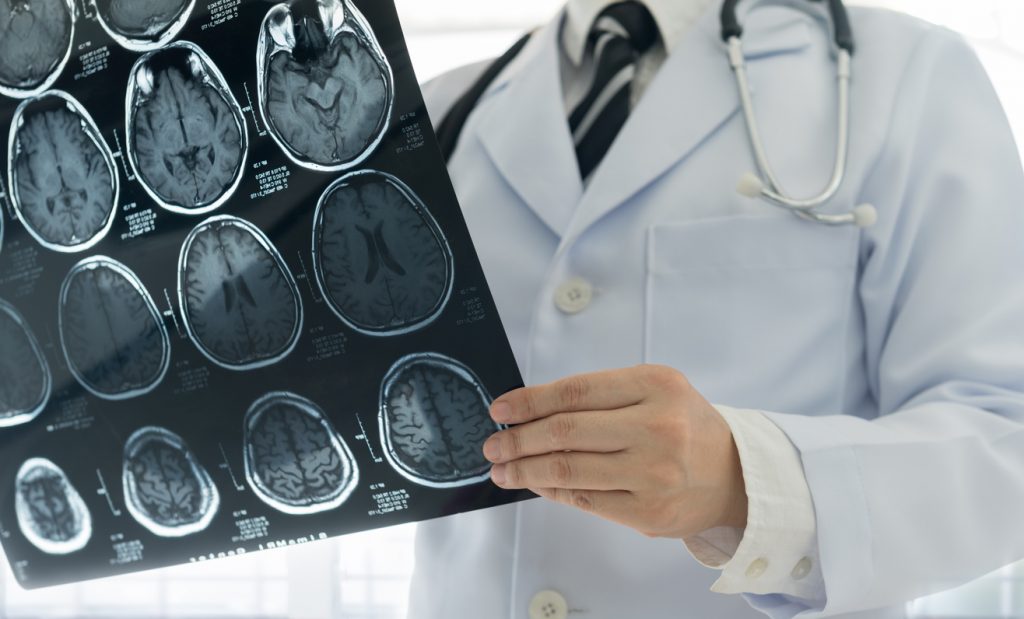This study will use magnetic resonance imaging (MRI) and magnetic resonance spectroscopy (MRS) of the brain to try to gain a better understanding of the disease process in Tourette’s syndrome, a neuropsychiatric disorder characterized by motor and vocal tics. Tourette’s syndrome is also associated with behavioral and emotional disturbances, including symptoms of attention deficit hyperactivity disorder (ADHD) and obsessive-compulsive disorder (OCD). MRI and MRS show chemical substances in the brain. Findings in normal volunteers will be compared with those of patients.
Official Title
Evaluation of Tourette’s Syndrome with Multimetabolite H-Magnetic Resonance Spectroscopy at 1.5 and 3T
Conditions
– Tourette Syndrome
Study Type
Observational
Study Design
Natural History
Further Details
Healthy volunteers and patients with Tourette’s syndrome 14 years of age and older may be eligible for this study. Volunteers will be screened with a medical history and physical and neurological examinations. Patients will be screened through NINDS protocol 93-N-0202. Participants will undergo MRI and MRS. MRI uses a strong magnetic field and radio waves to visualize brain anatomy and chemistry. For this study, the subject lies on a stretcher, which is moved into a strong magnetic field (the MRI scanner). Earplugs are worn to muffle loud thumping noises caused by the electrical switching of the radio frequency circuits. During the study, the subject lies still during each scan, for 1 to 8 minutes at a time. Total scanning time varies from 20 minutes to 2 hours, with most examinations lasting between 45 and 90 minutes. The subject can speak through an intercom with the staff member performing the study at all times during the procedure. Up to 5 studies may be performed. The purpose of this study is to obtain a better understanding of the pathophysiology of Tourette’s Syndrome with nuclear magnetic spectroscopic imaging. The basal ganglia have been implicated in the origin of tics, and we plan to use spectroscopy to determine whether there is any neuronal degeneration or a decrease in GABA within the basal ganglia, thalamus, or frontal cortex of patients with Tourette’s syndrome when compared to normal individuals. Patients with tics and age-matched normal volunteers will be scanned with a 1.5 Telsa or 3 Telsa GE magnetic resonance imager using a multislice multivoxel program for N-acetylaspartate, choline, creatine and lactate. Then single voxel analysis for GABA will be performed in selected regions of interest (ROI) and the two groups will be compared.
Study Start
Eligibility & Criteria
Genders Eligible for Study: Both Accepts Healthy VolunteersCriteria INCLUSION CRITERIA:Patients will have clinically documented Tourette’s syndrome as defined by DSM-IV and evaluation of tics severity using Yale Tic Scale.Fourteen patients will be in age ranges 14-65. Patients may be male or female. Female patients of child bearing potential will have a pregnancy test and specific interview prior to the study to ensure that pregnant patients will not participate in the study. Patients will be asked to stop any medication that can influence central nervous system for one week prior to exam also they will be asked to abstain from alcohol for one week before the study.Twenty-four normal controls will be included; controls will be screened in the NINDS Movement Disorders Outpatient Clinic, and will have neurological and physical examination. Controls with chronic illnesses, taking any medication that affects the CNS will be excluded. They will be asked to abstain from alcohol for one week before the study.EXCLUSION CRITERIA:Patients younger than 14 years old will be excluded from the study.Patients with MRI findings consistent with brain tumors, strokes, trauma or AVMs will be excluded.Patients with progressive neurological disorders other than Tourette’s syndrome will be excluded.Patients with a history of significant medical disorders, or requiring chronic treatment with other drugs, which, cannot be stopped, will be excluded.Patients with implanted devices such as pacemakers, medication pumps or defibrillators, metal in the cranium except mouth, intracardiac lines, history of shrapnel injury or any other condition/device that may be contraindicated or prevent the acquisition of the MRI.Patients with cancer will be excluded.Patients not capable of giving an informed consent will be excluded.
Total Enrolment
90
Contact Details
[1] National Institute of Neurological Disorders and Stroke (NINDS) (US)All content and media on the HealthEngine Blog is created and published online for informational purposes only. It is not intended to be a substitute for professional medical advice and should not be relied on as health or personal advice. Always seek the guidance of your doctor or other qualified health professional with any questions you may have regarding your health or a medical condition. Never disregard the advice of a medical professional, or delay in seeking it because of something you have read on this Website. If you think you may have a medical emergency, call your doctor, go to the nearest hospital emergency department, or call the emergency services immediately.







